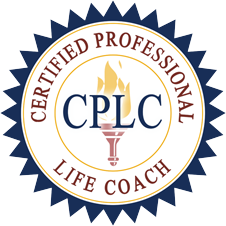At The Eastern Catholic Re-Evangelization Center’s (ECRC) Annual Awake My Soul, Fr. Pierre Konja delivered a homily message in less than three minutes – he drove his point home. The mass concluded a nearly six-hour conference. The mass was the 7th hour that started at 11 p.m. He realized people were tired and had a lot to process from the speeches and Praise and Worship music. I got more out of that brief message from Fr. Pierre than I have gotten from other 40-minute homilies.
There is something to say about brevity when it comes to public speaking. Those who have taken public speaking classes or who have trained people in public speaking, know the power of storytelling. People often remember the story before they remember the message being presented. If you want your audience to take away something from your talk, share stories. Fr. Pierre didn’t really share a story, but he pointed to reading and the Gospel that night and made a very valid point about doing just ONE thing today to evangelize the faith. Pick one small thing you can do to better your relationship with Christ and bring others to Him.
Whether you’re a priest delivering a homily or an executive motivating the staff, how you say something is just as important as what you say and, in some cases, more important. The delivery can be everything. Recently, Pope Francis shared a message about keeping homilies to 10 minutes. I Retweeted the Tweet about it. It’s a communication lesson from the Pope and a good one. He suggests that homilies should brief because much longer than that, people are longer paying attention.
It wasn’t the first time Pope Francis reminded priests to be brief. In 2018 he said in a speech, “”Whoever gives the homily must be conscious that they are not doing their own thing, they are preaching, giving voice to Jesus, preaching the World of Jesus,” he said. Because of this, homilies “should be well prepared, and they must be brief!”
This approach is not only effective when speaking to a religious organization or at a company staff meeting, it applies when communicating one-on-one or in small groups like we often do while networking. I often talk about Naturally Networking, using your natural talents to connect, communicate and collaborate with others. This includes keeping your comments brief, to the point and engaging. You can do this by sharing a brief story and then ask the person you are talking to a question to get their insight about the topic.
When hosting a press conference or presentation, each speaker should keep remarks short, even the keynote speaker. If you have several presenters, limit their talks to two minutes and the keynote speaker to less than 10 minutes.
Your talk should also have a clear theme. Think about what you want to person or people to take away from your comments. Speak with purpose.
Your goal should be leaving people wanting more not wishing the conversation or presentation would end.
Seven strategic steps for keeping the message brief
- Focus on the Message: think about the message you want to leave the audience with- what’s the takeaway?
- Start with the Story: share a story that applies to the point you are wanting to make, and you might consider starting with the story and driving the point home.
- Edit Down: Writing is rewriting. Write your first draft without editing and then edit the talk down. Delete any repetitive statements that are off your main point.
- Bullet Point It: Write your main ideas. Do not write the speech verbatim. This will help you deliver the message in a more natural way. You don’t want to read your speech. You want to engage the audience with eye contact.
- Practice: Deliver the message several times. Read your talk out loud by following your bullet points. Stand up, look out as if you are looking at an audience. Maybe have friends or family be the audience as you practice.
- Record It: You can record your delivery and watch or listen to it and start critiquing it yourself. Make note of what you did well and where you need to improve.
- Get Feedback: Ask your mock audience to critique your message and delivery for you. Get feedback from 1 to 5 people before you deliver your message to a larger audience or to a more intended audience.




